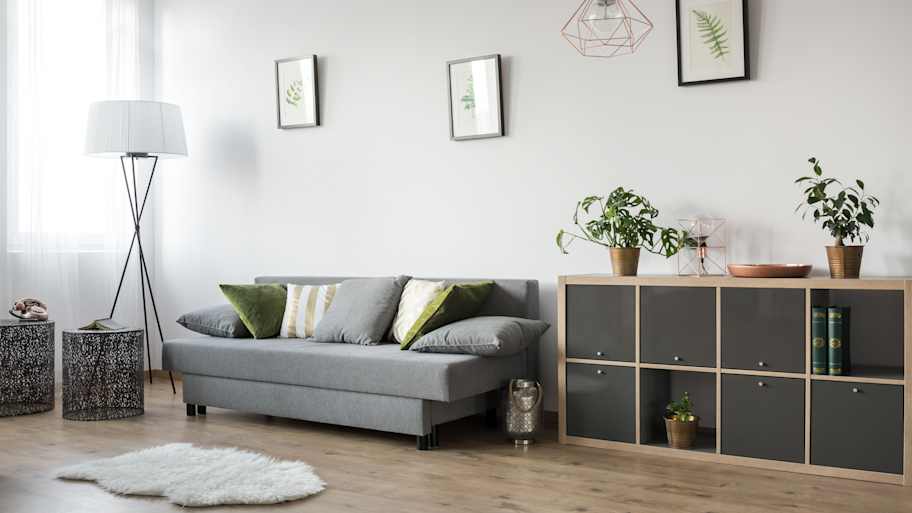
Mold remediation cost can quickly escalate. But if you have mold in your home, the cost for mold remediation is worth it.
Turn mildew into mildon’t with proper removal and prevention techniques


If you find mildew in your house, your first thought should be, “how do I get rid of it?” The good news is, it’s a simple process. However, don’t take this mold variant lightly—you’ll still want to protect yourself with safety goggles and a mask to ensure you don’t get sick.
When you see mildew in your home, it could be from a number of reasons, but an increased level of moisture causes the vast majority of cases. When humidity levels rise above 50 percent, mold and mildew spread rapidly which makes getting rid of mold much more difficult. When mildew forms it usually has nothing to do with how well you take care of your home, but there are definitely some factors that make it worse, including:
Poor ventilation, especially in closed-off rooms like basements and bathrooms
Not running exhaust fans when showering and bathing
Leaving damp items around the home
Trapping humidity inside during the colder months
Not cleaning surfaces regularly
If you see mildew, you need to address it immediately as it can quickly damage your home, as well as increase health risks. If you have any inkling there is mold or mildew in areas of your home where you can’t quickly and safely clean, call a professional.

Mold and mildew occur in the same places, for the same reasons, and can both pose a health risk. Identifying which is which is not always easy, and should only be done while wearing proper protective equipment over the face and eyes.
Mildew is often grey, white, or light brown and tends to grow in a way that looks almost flat. It can look a bit like dirty powder at first, turning brown over time. Although mildew isn’t as dangerous as mold, it can still cause some respiratory issues, so protective gear is necessary when even getting close enough to determine it is, in fact, mildew.
Mold often has a fuzzy appearance and looks a lot like dirt. Typical colors of mold include green, red, or the dreaded black. Mold has a potent smell and often smells more “off” than mildew, which mostly just smells damp or like rotting material. Mold is by far the more dangerous of the two for your health and should almost always be handled by a pro.

Thankfully, getting rid of mildew—as long as it hasn't caused structural damage—is fairly simple, and usually isn’t much more involved than cleaning your kitchen counter.
The last thing you want is mildew in your lungs, eyes, or mouth. Wear a proper (but disposable) mask and goggles. Mildew goes airborne with very little disturbance and while you’re cleaning, the air will be full of it. Small amounts are usually not harmful but there’s no sense risking a respiratory illness, and protective masks are inexpensive.
Hopefully, you discover the mildew when it’s warm outside and you can just throw open every window in your house. Mildew can easily jump from where you are cleaning and settle on another surface, and you can mitigate that by letting in fresh air to vent the house. Bonus: this should also decrease your humidity if your house is a higher humidity than outside, and will also help remove moldy smells from carpet.
There are a few different types of cleaning solutions you can use when cleaning mildew. Bleach and water mixes, white vinegar (a natural mold killer), and antimicrobial sprays are your best bets. Spray and clean the area with a sponge first, then paper towels. Make sure the area is incredibly clean and dry when you are finished.
The reason you want to use a sponge and paper towels is it’s better to throw them out when finished. You shouldn’t use towels in order to avoid cleaning mold from your washing machine. Throw out your protective gear as well.

The last step of removing mildew is actually preventing it from returning. Proper ventilation is a great first step, but there are other, more proactive things you can do to keep it from returning.
Use a dehumidifier in high-moisture areas. Empty frequently.
Use a hygrometer in your home to make sure humidity levels are between 30-50 percent.
Periodically ventilate the entire house by opening windows or using exhaust fans.
Always run the bathroom exhaust fan when showering or bathing.
Clean surfaces regularly.
Never leave water pooled on a surface.
Fix all leaking pipes immediately.
Mildew is something that you may have to deal with periodically, but it isn’t a terrible issue. It usually forms during the winter months when humidity is trapped inside a house that isn’t ventilated regularly. Having a hygrometer in at least one room of your house is a great way to stay on top of mildew.
From average costs to expert advice, get all the answers you need to get your job done.

Mold remediation cost can quickly escalate. But if you have mold in your home, the cost for mold remediation is worth it.

The cost of a mold inspection might seem high, but it’s one of the best investments you can make for your health and home. Read on to learn cost-saving tips.

Mold on wood is a common problem that needs to be removed to prevent health hazards and structural damage. Use this guide to learn how to kill mold on wood.

What does black mold look like? It has a dark color and may appear slightly fuzzy. Use this guide to learn about the variations in black mold’s appearance.

Worried about mold behind your drywall? Learn how to spot the signs and when it’s time to call in a professional, plus how to prevent it in the future.

When it comes to black mold vs wood rot, one causes a much bigger threat to your family. Keep reading to learn which.